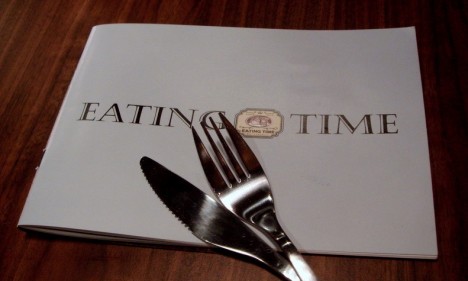
Photo collage by CalorieLab
“You only live once, but if you do it right, once is enough” – Mae West
Resisting temptation can be extremely difficult. How difficult? Take the relatively new social activity of texting. It’s bad enough that many people text while driving, endangering themselves and others. But you would think that it would be easy to resist texting in the shower or on the toilet. Yet 34 percent of students do it anyway. I suppose I could forgive even this. However – and I don’t care how badly the ceiling needs painting – there is absolutely no reason to text while having sex. Nevertheless, more than 7 percent of college students admitted to not being able to resist that temptation.
How many people are familiar with actress Mae West? Her motto “I generally avoid temptation unless I can’t resist it,” is as apt today as it ever was.
How do temptations get so powerful? Mae West suggested the answer when she said. “I’ll try anything once, twice if I like it, three times to make sure.”
Like a snowball rolling downhill, temptations start small and weak but can grow big and powerful. Sure you think you will just give in to that small tempting unhealthy snack just once, but is that what happens? The problem is like building that snowball, the brain builds connections from repetitive actions, and over time this consistency causes cravings. The more frequently the behavior is repeated the stronger the cravings, and thus the temptation to repeat the behavior grows, leading to a very big snowball that will have its way with you.
But you can resist your temptations
Short of tying ourselves to the mast as Ulysses did, how can we resist temptation? Mae knew because “A dame that knows the ropes isn’t likely to get tied up.” In your case you must train your brain not to need the ropes. The key to doing this is action. We must notice, focus our intention, and act differently.
Specifically:
-
Become consciously aware of the unconscious craving.
-
Make yourself aware that the craving is coming from your brain. Perhaps initially, it was caused by fatigue, boredom or stress, but once it becomes entrenched you must realize that your brain is giving you an unhelpful message.
-
Do not give in but rather do something else, preferably a healthy activity. For example, if you are actually hungry, make a healthy food choice even if it is less desirable. If you understand that you are not hungry, do some activity like taking a walk, talking to a friend, or working on a some project that will focus your mind elsewhere.
-
Be aware that this craving is a feeling that does not have to be given in to. It does not have control over your actions. In time you will understand that the feeling of hunger does not mean that you have to eat then and there.
-
Limit the availability of what you crave. Keep these trigger foods far away from where you are, do not go where they are, and never give in to these foods no matter what.
-
Tell yourself that you can wait 15–30 minutes. Usually the craving will pass.
-
Remind yourself of what you are trying to achieve. Each time you do not give in to your craving you will be making your brain less likely to create the craving again, and each time you give in the craving will be stronger the next time.
This will take effort, consistency and time. The longer we have done the behavior and the more engrained it is and the longer it will take to change the behavior.
“I never said it would be easy, I only said it would be worth it.” – Mae West

By Dr. J, a maxillofacial surgeon living in Florida. Dr. J has travelled to Haiti to treat indigent patients and has taught as an associate professor at a Florida dental college. In his spare time Dr. J is a dedicated runner as well as a pilot who flies his Piper Cherokee Arrow throughout Florida. He has a black belt in karate. Dr. J has written for CalorieLab since 2007.
Concrete Tips for Dealing with Unhealthy Food Temptations is a post from:
SOURCE: – Read entire story here.





